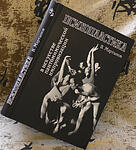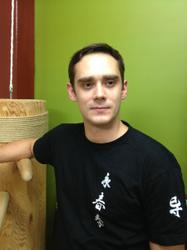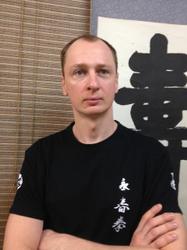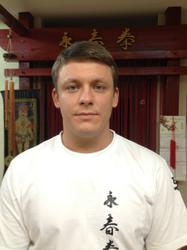Nianda as a Martial Sport
This article is based on correspondence with Chinese Masters
Nianda originates from Shaolin and Wudang martial arts. Nian means adhesive’ or sticky’ and Da stands for a fight’, an exchange of blows’ or a bout of sparring’. Nianda was influenced by Taoism, Buddhism and Confucianism. Its object is not offence but defence. The peaceful objective of Nianda explains why it involves so many movements, such as different pushes, holds and strikes, which are not supposed to hurt one’s opponent.
Nianda competitions is an attempt to display a high level of martial art skills without a use of gloves, only with some body and head protective equipment. This would help to imitate a real fight, but with some precautionary measures like in other amateur sports. Modern body and head protective equipment, together with mats, provide safety. This resolves some problems we experienced in the past. We’ve been scrutinizing other sports’ experiences to improve safety rules. That is why Nianda can be considered quite safe comparing to other amateur contact sports.
All forms of hand-to-hand combat require the fighter to approach his opponent to deliver a blow or apply a hold. Nianda helps develop the technique required for close combat. Perhaps, Nianda’s only problem is its various levels of complexity. It involves such complicated techniques, as taking advantage of the power generated by body rotation and body angle; the ability to control muscle stretching/relaxing; the ability to perform different body motions; the ability to strike a heavy blow within a short distance; a high level of perception, etc. The art of repelling aggression is based on the concepts of sticking and following.
The origins of Nianda are closely interwoven with other martial arts. It comprises the sticky hands of Wing Chun, the pushing hands of Tai Chi, the pushing palms of Bahua and the aggression repelling techniques. These different approaches haven’t been used to the full extent in modern contact sports. Nianda does not teach a way of exchanging blows. Rather, it teaches a way of continuous attack and counter-attack. Hopefully, Nianda will contribute to the overall development of martial arts.
Nianda competitions might not be very interesting to the general public due to their complexity. On the other hand, the competitors and martial arts experts will definitely be interested in Nianda. This sport is open to followers of all martial arts to compete and interchange their knowledge.
Nianda’s primary theories include Lian Xiao Dai Da’ and Zhan Lian Nian Sui’. Lian Xiao Dai Da can be defined as the connection between neutralization and simultaneous blows’. Lian means link’ or connection’; Xiao stands for neutralize’; Dai means to carry’, to lead’ or simultaneously’. This implies continuity, rather than a block-strike’. In some cases people prefer to escape the blow first and then respond with ones own blow. This may be considered a way of neutralization by escape and counter-attack. This may also be considered one of the ways to enter the fight, as any counter-attack may be met by neutralization with a simultaneous blow.
Zhan Lian Nian Sui can be explained as the touching provides a connection while the sticking makes it easier to follow an opponent’. Zhan means touching’ or sticking’; Lian stands for link’ or connection’; Nian means adhesive’ or sticking’; Sui stands for follow’. Nian is the key to Lian Xiao Dai Da, or the ability to neutralize one’s opponent by sticking and, simultaneously, striking him a blow. The ability to control an attacking arm or attacking arms of an opponent by sticking has been demonstrated by different martial arts.
Nianda may be considered an eclectic discipline, which selects various sticking techniques from different martial arts. I hope Nianda will draw together the representatives of various fighting systems for competing and experience exchange.
Nianda may also be considered as the point of contact between Shaolin and Wudang arts. Shaolin martial arts are mostly based on motions of the arms, while Wudang involves body motions. Nianda is the final result of their development – a fight by very flexible hands. The domination of the arms provides speed and good technique and the domination of the body provides strength. Nianda successfully combines the features of different martial arts. It is possible for Nianda to take advantage of both Shaolin and Wundung arts in becoming a completely unique art.
Currently, the only Nianda enthusiasts are those few martial arts experts from Guangdong and Hong Kong who promote Nianda as a sport. Hopefully their initiative will be supported by the international martial arts community.





 Коан – вопрос к членам Федерации Юн Чун Цюань от президента В.В. Мартынова: «Что Вы сделали для Федерации из того, что не мог бы сделать любой другой за деньги?»
Коан – вопрос к членам Федерации Юн Чун Цюань от президента В.В. Мартынова: «Что Вы сделали для Федерации из того, что не мог бы сделать любой другой за деньги?»


